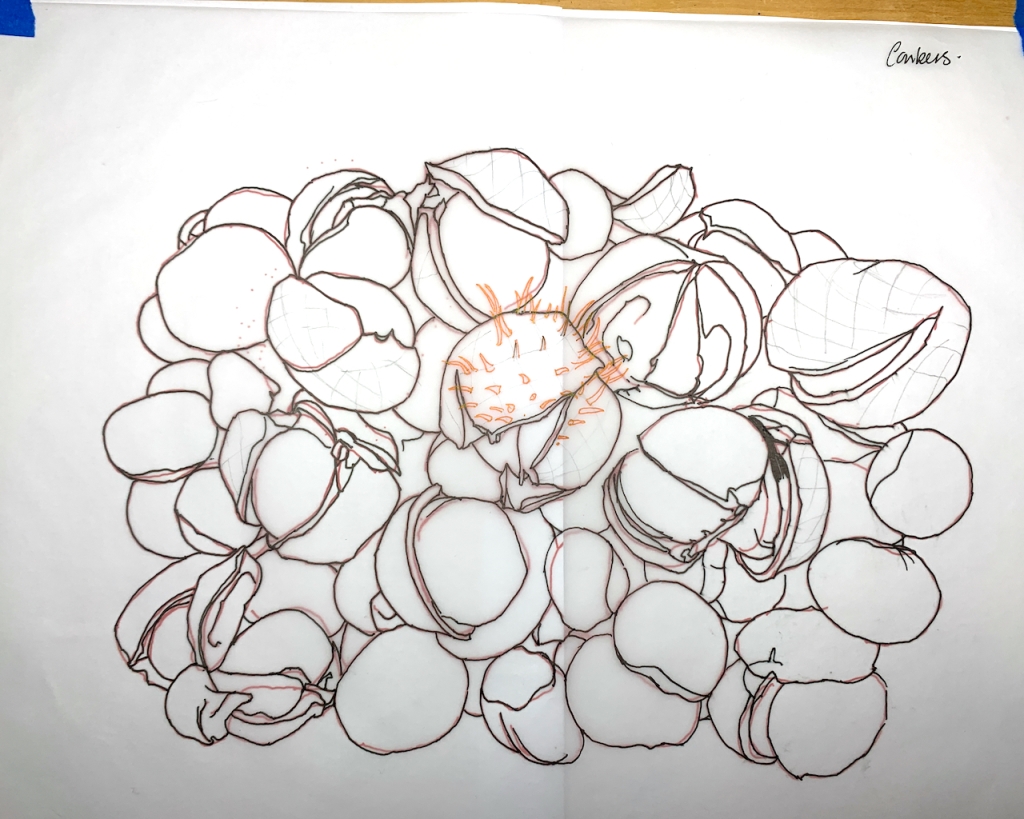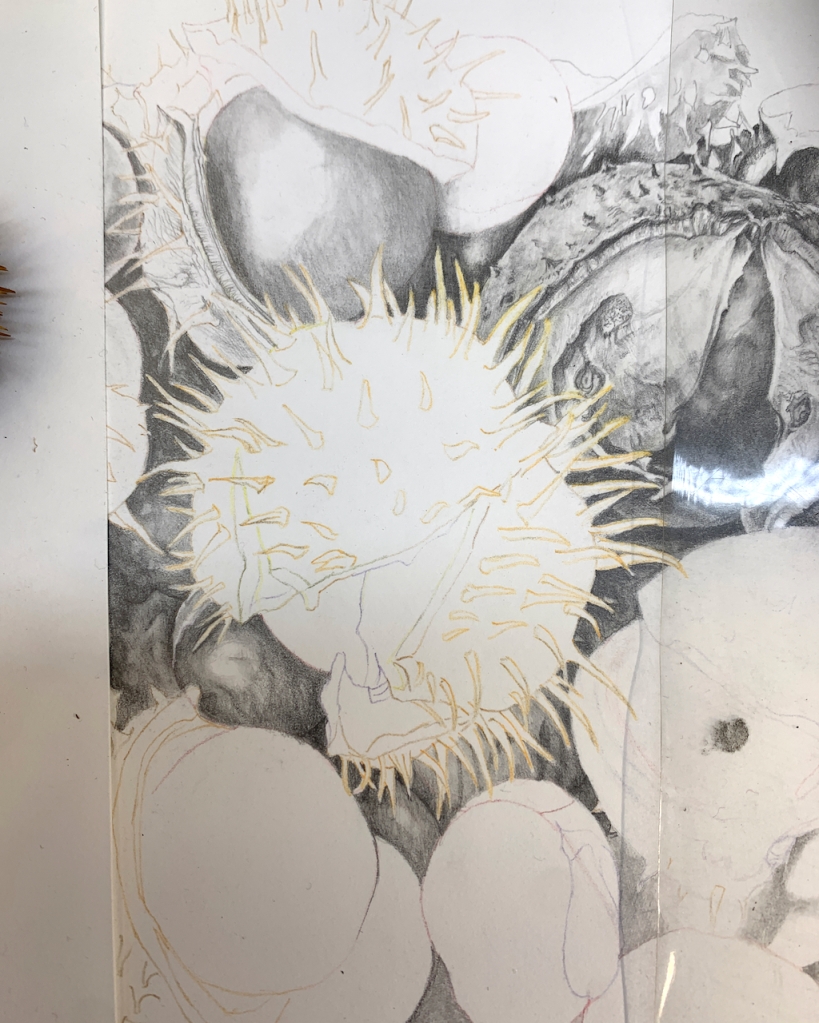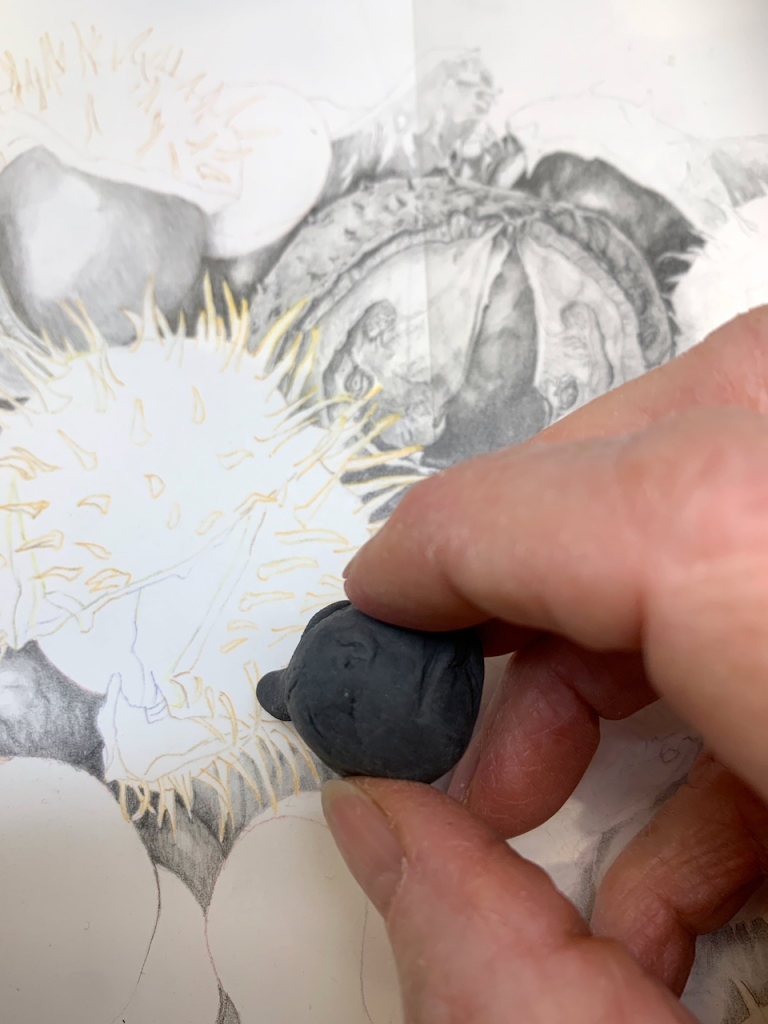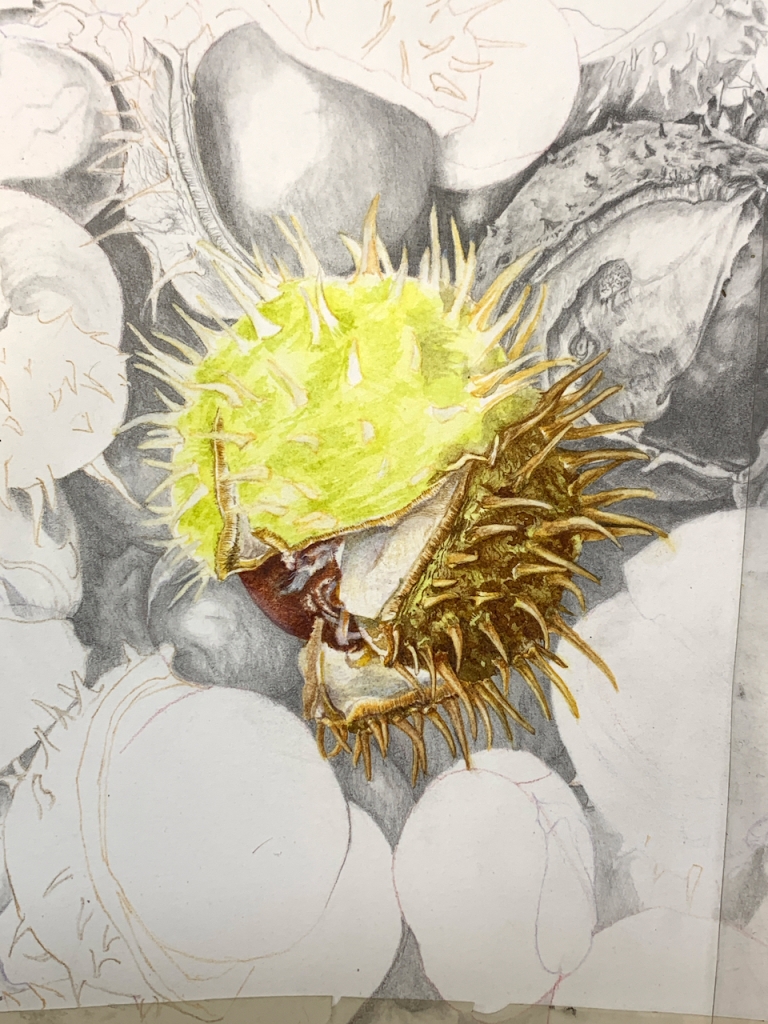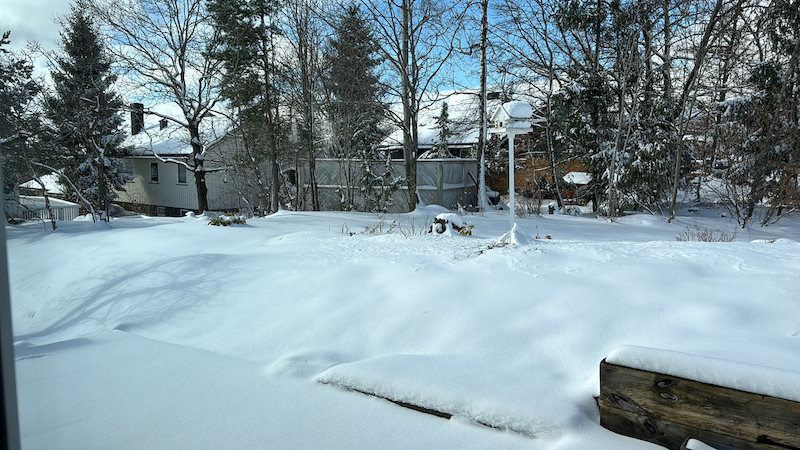

We had a very long cold and snowy winter from 31 October 2023 until the last lot fell on 5th April 2024. In fact, the locals don’t remember so much so near to the Oslo fjord. At one point we had about 2 metres of it and one day we were unable to open any of our doors to get outside. In the end I pushed the kitchen door open a few cm and then used the shovel from a fireside-set to gradually dig my way out.
Of course we had no idea that we would have so much snow and had put wire fences round the apple trees and plants to prevent the deer chewing in the winter. Little did we know that the snow would come well above the fences and there were periods when the deer were really hungry and were able to reach up to the juicy bits on top of the trees!!
I don’t want to bore you with pictures of snow, but have put this little group together:
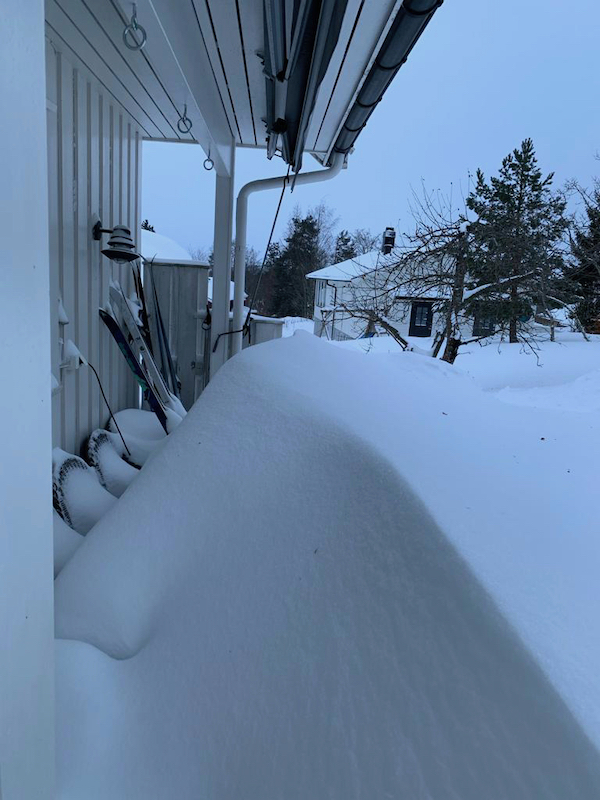
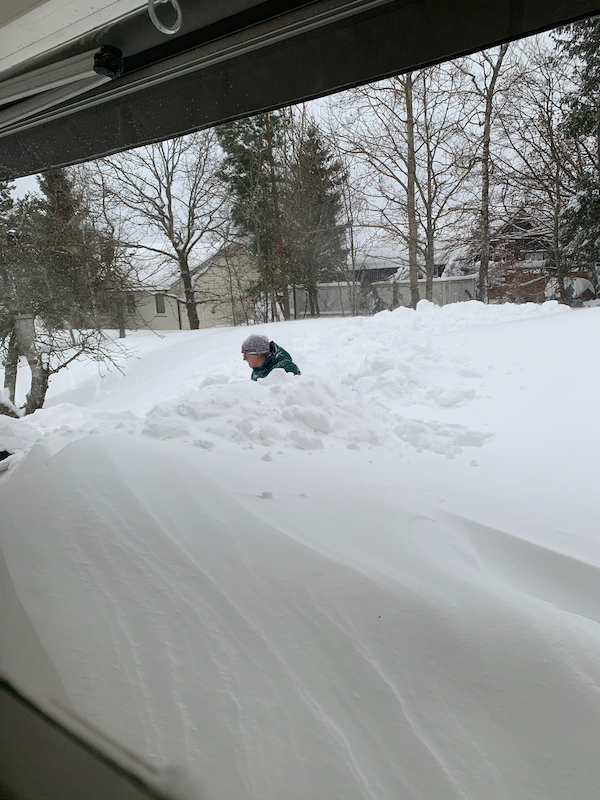



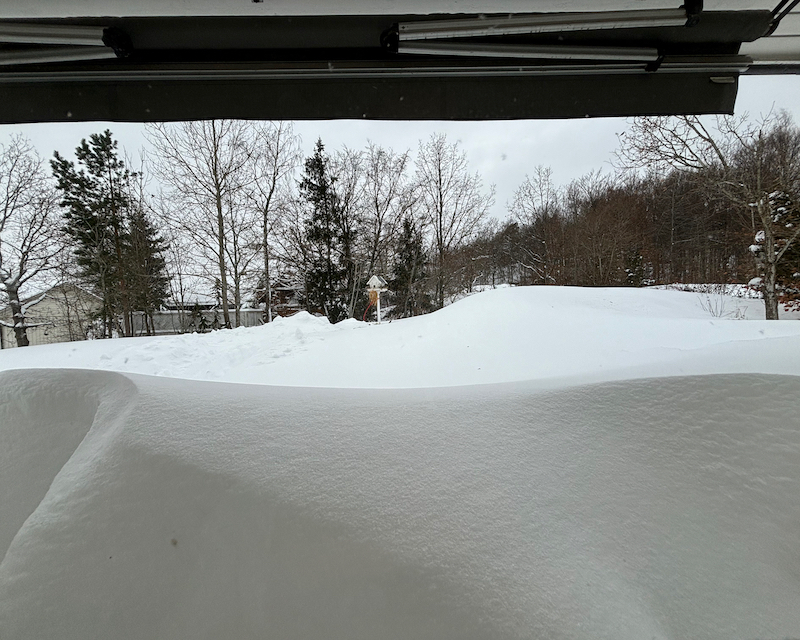
We thought the winter would never end; I couldn’t even access plants to paint. Then suddenly summer arrived. The snow and ice melted over a couple of weeks, the snowdrops started flowering on the edge of the melting snow. This was quite funny to see because as the snow receded, the white flowers emerged. We thought that the ones first flowering would be over by the time the snow actually went, but each patch lasted quite a while.
The next was looking for some green to appear. Every year the grass is brown in the spring and it looks very dead, but after only a few days it starts turning green. Our house looks out over a valley so we can watch as a haze of green tips appear on the trees – until Pang, the world looks as though it has always looked luscious.
This is how the world looks for us now, just a few weeks later:


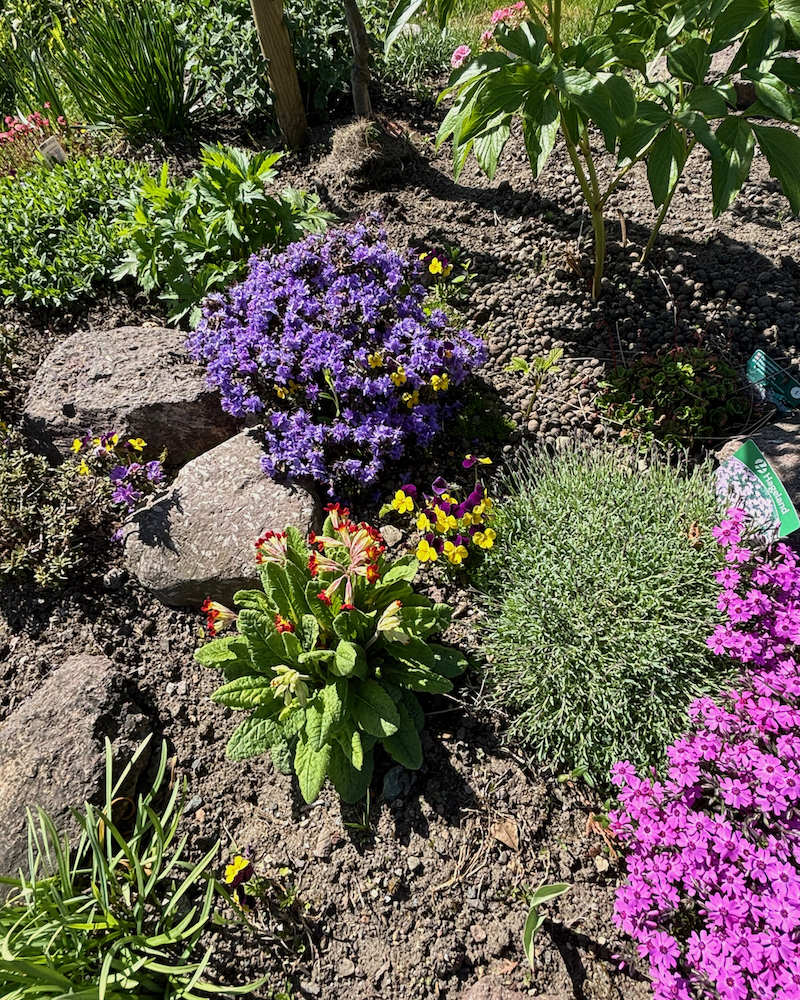



What an amazing world this is!
We sat on the kitchen terrace early today and ate out breakfast in the hot sun. The same terrace where I had to use my fireside set to shovel the snow away. Looking across the valley we commented on how the trees have attained the green of leaves having been there quite a while. Even the oak leaves were fully open.
As a botanical artist, this shows how important it is to think about the availability of subjects at different times of the year. I will show a little of what I did during this last winter.
During last autumn we had some family visits and showed them parts of our beautiful Norway including an old fort that was used to protect us from the Swedes!! We took the ferry across the Oslo fjord and visited Old Fredrikstad. It is a lovely place to visit and the star shaped ramparts have lots of Oak trees. This meant that in the Autumn there were lots of conkers which I duly collected.
I had some thoughts about wanting to use both graphite and watercolour. In the end, I used everything that came to hand including water soluble graphite, colour pencil and watercolour. I had taken loads of photos of my conker collection, and from this did a line drawing. Of course as the weeks passed the conkers dried, but with the aid of my photos I was able to paint from the conkers in their changing state.
Also as a botanical artist I continue to learn and try to improve. With the picture of Conkers, I was reasonably happy but still wanted to explore new ways of working with graphite. I have always loved using graphite and sections are often found in my pictures.
Whilst in the Netherlands in April I was able to get more graphite. My favourite pencils are Caran d’Ache Grafwood, but with the final picture above, I was trying to reduce the risk of shiny graphite in the areas I wanted to get really dark. How to do that?! I often use water on top of the graphite to set it, but it didn’t quite work here, although I added water soluble graphite on. top.
Faber Castell have introduced som Pitt Graphite Matt, which gets rid of most of the shine. I used a combination of the Grafwood and Pitt Graphite Matt in my next picture, but also used graphite powder. If I want it really black and matt, I have also bought powdered carbon, but so far that is just a little too dark.
A plant that has always fascinated me in Norway is the Tussilago farfara – Coltsfoot. I mentioned the Snowdrop appearing from the edge of the snow as it melts, well another plant is the Coltsfoot. It is considered to be the first flower that appears after the snow goes. Along the roadside, the mucky snow melts away leaving dots of yellow here and there. An incredible little flower, but as it seeds like dandelion I don’t think it is appreciated everywhere.
I wanted to show it emerging from the dark winter:


